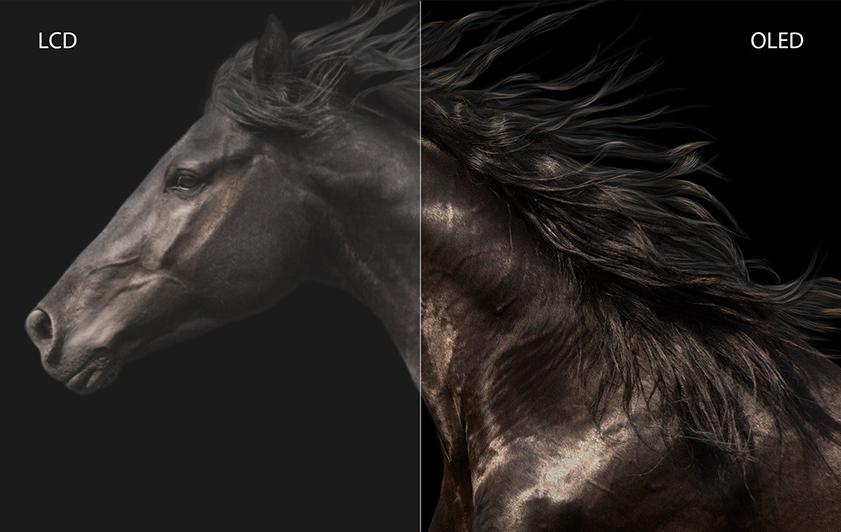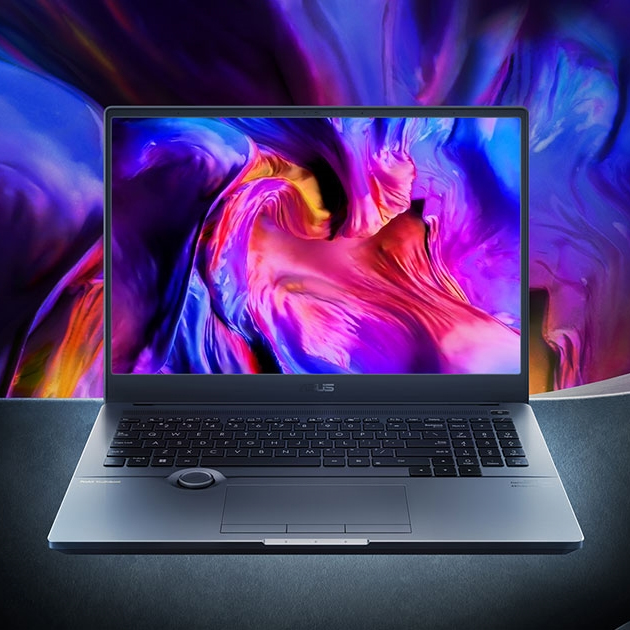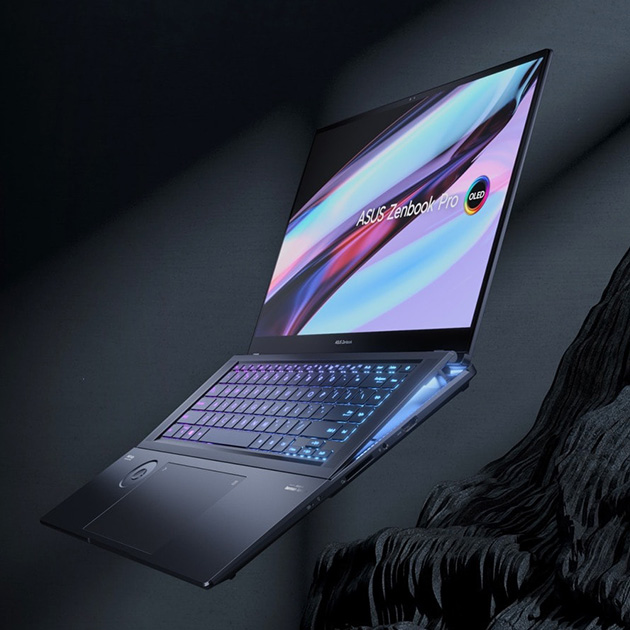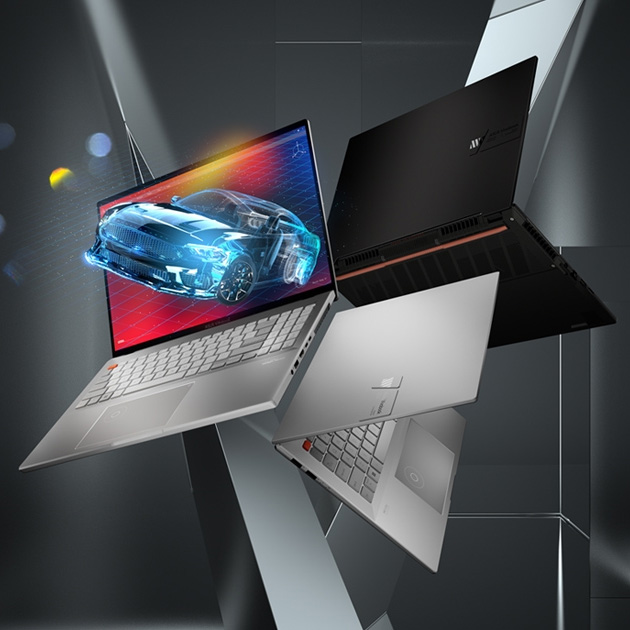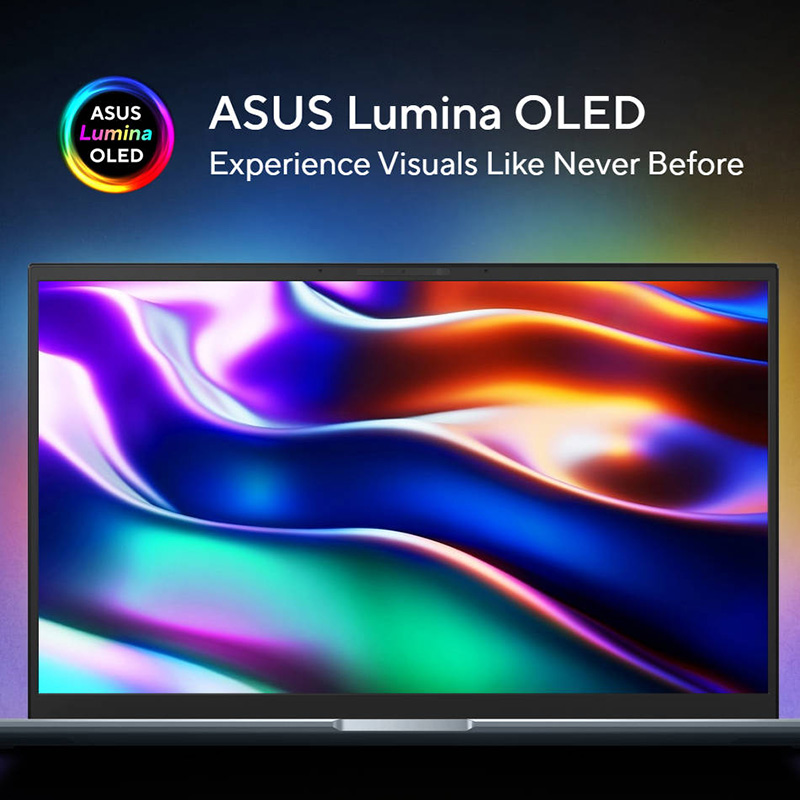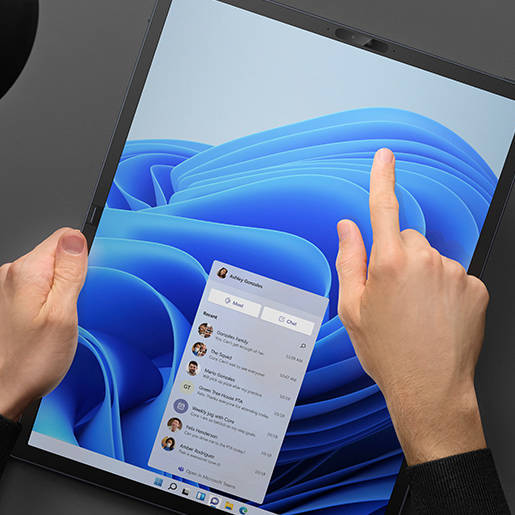
Sep.15 2022
OLED. You see this word all over tech news feeds and social
media pages. Brands are releasing new devices packing this
technology, across various product categories: OLED TVs,
handheld gaming consoles, high-end smartphones and other mobile
devices, computer monitors, gaming laptops, consumer laptops,
and even some innovative applications are presented during
events like CES.
With all this buzz, you must be wondering: "What is OLED? How
does it work? Do I need it? Why should I buy a laptop with
OLED?" In this 101 guide to OLED laptop displays, we will answer
all these questions and more!
What Is an OLED Display?
OLED is a display technology that has been rising in popularity
in recent years. If the word looks like an acronym to you,
you’re absolutely right! "OLED" stands for Organic
Light-Emitting Diodes. The "Organic" part of the name refers to
the carbon film that is a part of the structure of OLED
displays.
OLED devices are usually made of 6 components: a substrate, an
anode, organic layers, a conducting layer, an emissive layer,
and a cathode.
The main characteristic of OLED technology is that each pixel is
composed of three self-illuminated sub-pixels (red, green, and
blue), and is separately lit. This technology allows you to view
colors on your screens like never before!
How Does OLED Work?
If you look very closely at an OLED screen, you will see an
array of small red, green, and blue dots (sub-pixels), which
form pixels. Each of these has its own light source, and lights
up independently of other pixels, engaging different proportions
of the three colors to project your image.
What’s Good About the OLED Display? Differences Between LCD,
LED, and OLED
When comparing an LCD or LED (both work by the same principle,
but using a different type of light) screen to an OLED display,
you will notice a couple of advantages of the last.
First of all, the colors on the OLED display are just popping
out of the screen! With full range of colors displayed, you will
enjoy true-to-life colors. OLED screens are capable of
displaying over 60 times more colors than most LCD laptop
displays (1.07 billion VS 16.7 million). Color gamut coverage is
also much more impressive, with 100% DCI-P3 coverage (compared
to 62.5% on most LCD laptop screens).
One color you will notice especially is black. This is due to a
different technology being utilized here. LCD screens use
backlight to "shine" onto other layers, which creates an
unwanted "aura". This relates to some pixels that aren’t
supposed to be lit up receiving some light as well. It often
causes the black levels on LED & LCD screens to look "somewhat
black" or dark-gray-ish.
In comparison, when black color is displayed on an OLED display,
the pixels where the black appears are simply turned off until
needed, providing you with true black color and amazing
1:1,000,000 contrast.
OLEDs also provide much better color performance at low
brightness levels, as pixels do not depend on the backlight.
When you decrease the brightness on an LCD screen, you are
basically lowering the amount of light that will be reaching the
pixels. In the meantime, OLED pixels will be producing their own
light to display the colors ─ just not as bright, but still
accurate.
While blacks are darker, the whites are brighter! OLEDs are
capable of producing up to 600 nits of brightness, while most
laptop LCD screens can produce up to 250 nits.
But it’s not only about how well things are displayed. It’s
about the whole experience. OLED screens provide wide viewing
angles, which allows you to show the screen content to multiple
people at once. On other types of screens, viewing from angles
that aren’t almost completely straight to the surface can result
in an unclear image with lots of reflections.
Finally, thanks to the organic compounds used in the OLED
displays, you will be exposed to up to 70% less harmful blue
light than most laptop LCD screens.
Blue light is often cited as one of the main causes of eye
strain
, which can lead to the degradation of your vision. Ever catch
yourself rubbing your eyes after a long session in front of your
laptop? Good chance that the blue light is the culprit!
Do You Need a Laptop With an OLED Display?
While choosing a new laptop, a whole myriad of factors come into
the decision-making process. Choosing the right display should
definitely be one of them.
So who are laptops with OLED displays designed for?
Creatives & content creators
If you are creating visuals for work, you need to make sure that
you see exactly what you are making.
The color accuracy of OLED screens is essential for designers,
photographers, video editors, game designers, or content
creators, among others. OLED displays in ASUS creator laptops do
not only come with 100% DCI-P3 and 133% sRGB color gamut, but
they are also Pantone-validated for their accurate colors. Not
to mention the 1.07 billion colors-rich color depth!
Up to 120Hz refresh rate means you will see moving images
exactly as they are intended to be seen by your most-demanding
audience. Flicker-less, smooth motion on your screen allows the
ultimate viewing experience.
And your long sessions won’t be as damaging to your eyes, with a
70% reduction in harmful blue light as compared to common laptop
LCDs.
Professional users
OLED displays prove to be much more energy-efficient than their
LCD counterparts. That helps improve your computer’s battery
life. What does that mean?
If you forget your charger on a business trip, you can still get
a whole working day worth of battery life as opposed to having
to wait to get back home or to the office to charge your
notebook.
In the battery-saving mode, when you dim your screen, you can
still be sure to see well, as OLED screens produce clear images
at any brightness.
Wider viewing angles allow you to show your computer screen to
more people at once, without all of them standing directly in
front of the screen. This is great for group discussions,
collaboration, and showing your clients the results of your work
during meetings.
Your eyes will also be protected. If you’re noticing your eyes
getting fatigued after a long date with Excel or making
PowerPoint presentations, two contributing factors are blue
light and so-called flicker. Faster refresh rates and response
time in OLED displays allow you to increase the fluidity of
scrolling, decreasing eye-straining flicker.
The outstanding color accuracy will allow you to review the
marketing materials and see exactly how they will look on the
digital signage or after printing before you realize something
is off while seeing your company’s billboard on the metro.
Movie lovers, gamers, and other casual users
The viewing experience on OLED displays is a pure pleasure.
Whether you’re watching a movie on your laptop, playing some
games after hours, or using the laptop to entertain yourself or
communicate with your family via video conference, you will
benefit from the smooth-moving, color-rich image on your screen.
Computers with OLED displays are perfect companions, whether
while traveling, or enjoying your weekend "couch potato"
sessions. OLEDs are lighter than LCDs thanks to the fact they
usually use plastic instead of glass, contributing to your
laptops being thinner and lighter than before, making them more
portable and convenient. They also use less energy to deliver
your image, which is massive when it comes to improving battery
life.
Are OLED Laptops More Expensive Than LCD Ones?
Judging from other tech fields, like OLED television or handheld
gaming consoles, you would think that OLED-equipped devices tend
to be more expensive. Common sense would suggest that the same
would hold for notebook computers. And it did, until recently.
Not anymore. ASUS has rolled out OLED screens all across the new
consumer product lines: from affordable, stylish
Vivobooks
, through elegant and versatile
Zenbooks, to the professional creator machines like
Zenbook Pro Duo
or
ProArt Studiobook
, OLED is the new normal for ASUS users.
Discover ASUS OLED Technology!








